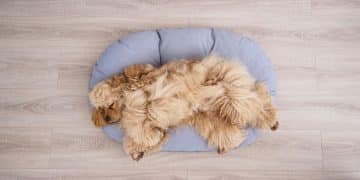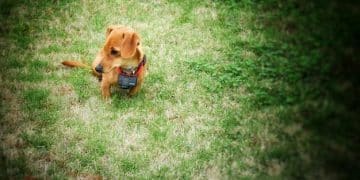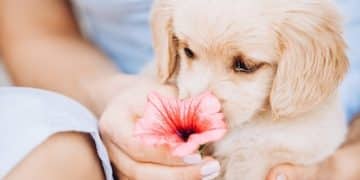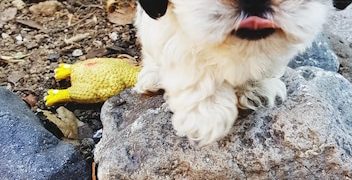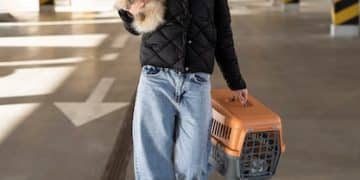Puppy-Proofing Checklist: Ensure Your Home is Safe for 2025
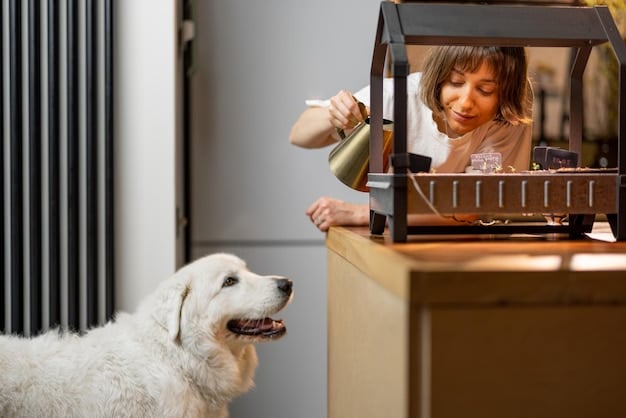
Puppy-proofing your home is essential for your new furry friend’s safety in 2025, involving securing hazardous items, managing electrical cords, and creating a safe, comfortable environment to prevent accidents and promote well-being.
Bringing a puppy home is an exciting time, but it’s crucial to ensure their safety. Puppy-proofing your home is an essential step to protect your new furry friend from potential hazards. This ultimate checklist for 2025 will help you create a secure and comfortable environment for your puppy.
Understanding Puppy Behavior
Before diving into the checklist, it’s important to understand how puppies behave. Their curiosity and tendency to explore with their mouths can lead them into trouble if precautions aren’t taken. Knowing their common behaviors helps anticipate potential dangers.
Chewing
Puppies explore the world through their mouths, so chewing is a natural behavior. However, this can lead to them chewing on dangerous items. Provide plenty of appropriate chew toys.
Exploration
Puppies are naturally curious and will explore every nook and cranny of your home. This exploration can expose them to hazards if unsupervised.
- Keep cleaning supplies and medications out of reach.
- Secure loose electrical cords.
- Ensure that small objects are removed from floors.
Understanding these behaviors helps you anticipate potential hazards and create a safer environment for your puppy. By addressing these common puppy traits, you can minimize risks and keep your new companion safe and sound.
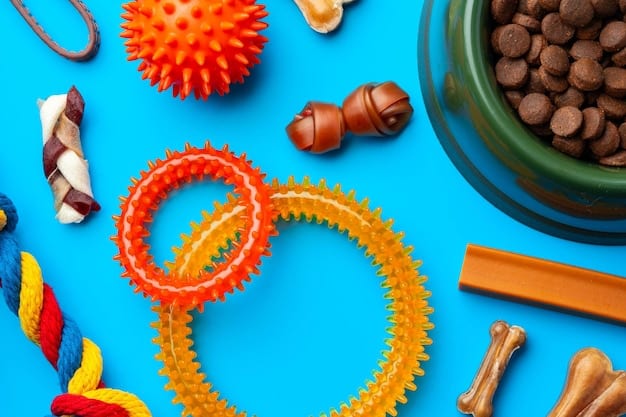
Securing Hazardous Items
One of the most critical aspects of puppy-proofing is securing any items that could be harmful if ingested or interacted with. This involves identifying common household dangers and taking steps to eliminate or minimize their accessibility.
Medications and Cleaning Supplies
Both human and pet medications, as well as cleaning supplies, should be stored in locked cabinets or on high shelves completely out of reach. Even seemingly harmless items can be toxic if ingested.
Toxic Plants
Many common houseplants are poisonous to dogs. Research which plants are toxic and remove them from your home or place them where your puppy cannot reach them.
- Lilies
- Poinsettias
- Azaleas
- Oleander
By carefully securing these hazardous items, you significantly reduce the risk of accidental poisoning or injury to your puppy, ensuring a safer and healthier environment for them to grow and thrive.
Managing Electrical Hazards
Electrical cords and outlets pose a significant risk to puppies, who may chew on them out of curiosity or teething discomfort. Taking proactive measures to manage these hazards can prevent serious injuries.
Cord Management
Use cord protectors, cord organizers, or cable ties to bundle and cover loose electrical cords. This makes it harder for puppies to access and chew on them.
Outlet Covers
Install outlet covers on all unused electrical outlets. This prevents puppies from sticking their noses or tongues into the outlets.
- Use childproof outlet covers for maximum protection.
- Regularly inspect cords for damage.
- Keep cords out of reach by routing them behind furniture.
Taking these steps to manage electrical hazards is crucial for protecting your puppy from potential shocks and burns, creating a safer living space for your new pet.
Creating Safe Zones
Establishing safe zones within your home provides your puppy with a secure and comfortable space where they can relax and avoid potential hazards. These zones can be particularly useful during the initial adjustment period.
Designated Play Area
Create a designated play area for your puppy with appropriate toys and bedding. This helps them understand where they are allowed to play and reduces the likelihood of them exploring restricted areas.
Crate Training
A crate can serve as a safe den for your puppy. Introduce the crate gradually and make it a positive experience with treats and toys.
- Never use the crate as punishment.
- Ensure the crate is the right size for your puppy.
- Make the crate comfortable with soft bedding.
By creating safe zones, you provide your puppy with a sense of security and reduce their exposure to potential dangers, fostering a happy and well-adjusted companion.
Puppy-Proofing Specific Areas
Different areas of your home present unique challenges when it comes to puppy-proofing. Tailoring your efforts to address the specific risks in each area can ensure comprehensive protection.
Kitchen
The kitchen often contains many potential hazards, including cleaning supplies, sharp objects, and food items. Keep counters clear and cabinets secured.
Bathroom
In the bathroom, be mindful of medications, cleaning products, and small items that could be ingested. Keep toilet lids closed.
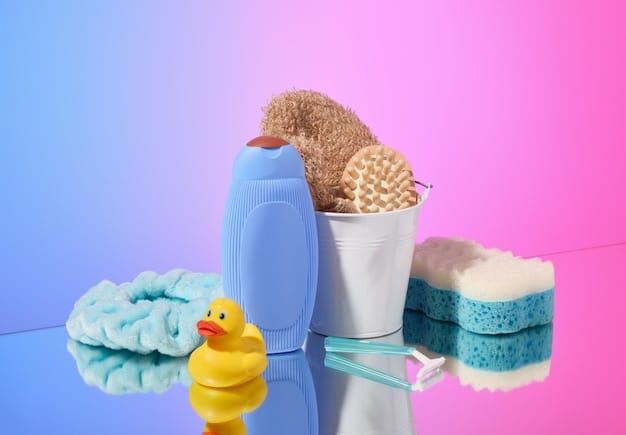
- Secure trash cans with lids that latch.
- Store laundry detergent and cleaning supplies out of reach.
- Remove any choking hazards from the floor.
By addressing the specific risks in each area of your home, you can create a safer environment for your puppy, minimizing the chances of accidents and promoting their overall well-being.
Training and Supervision
Even with thorough puppy-proofing, training and supervision are essential components of keeping your puppy safe. Consistent training helps them learn boundaries, while attentive supervision allows you to intervene when necessary.
Basic Obedience
Teach your puppy basic commands such as “leave it,” “stay,” and “come.” These commands can be invaluable in preventing them from getting into trouble.
Constant Supervision
Especially during the initial adjustment period, constant supervision is crucial. This allows you to monitor their behavior and correct any undesirable actions before they become habits.
- Use positive reinforcement techniques.
- Be consistent with your commands.
- Enroll in a puppy training class.
Combining puppy-proofing efforts with effective training and diligent supervision ensures that your puppy stays safe and develops into a well-behaved member of your family.
Maintaining a Puppy-Proof Home
Puppy-proofing is not a one-time task; it requires ongoing maintenance and adjustments as your puppy grows and their behavior evolves. Regular checks and updates will help ensure continued safety.
Regular Inspections
Periodically inspect your home for any new or overlooked hazards. As your puppy grows, they may be able to reach areas that were previously inaccessible.
Adapt as They Grow
Adjust your puppy-proofing strategies as your puppy develops. For example, they may outgrow their initial chew toys or become more adept at opening cabinets.
- Replace worn or damaged chew toys.
- Reassess potential hazards as they grow taller.
- Stay vigilant about their behavior and adapt accordingly.
By staying proactive and adapting your puppy-proofing measures as needed, you can ensure a consistently safe and nurturing environment for your growing companion.
| Key Point | Brief Description |
|---|---|
| 🔒 Secure Hazards | Keep meds, cleaners, and toxic plants out of reach. |
| ⚡️ Manage Cords | Use protectors and outlet covers to prevent shocks. |
| 🚰 Eliminate Choking Risks | Remove small items and secure loose objects. |
| 🧸 Provide Safe Toys | Offer durable toys to satisfy chewing instincts. |
Frequently Asked Questions
▼
Puppy-proofing protects puppies from potential dangers, reducing the risk of accidents, injuries, and exposure to toxic substances. This ensures a safe and healthy environment for their development.
▼
Common dangers include medications, cleaning supplies, electrical cords, toxic plants, small objects that can be swallowed, and certain foods like chocolate and grapes. Store these items securely.
▼
Provide plenty of appropriate chew toys to satisfy their chewing instincts. Use deterrent sprays on furniture and redirect their attention when they start chewing on something they shouldn’t.
▼
Contact your veterinarian or an animal poison control center immediately. Provide as much information as possible about what they ingested and follow their instructions carefully.
▼
Reassess your puppy-proofing efforts regularly, especially as your puppy grows and becomes more mobile. Adjust your strategies to address new challenges and ensure ongoing safety.
Conclusion
By following this ultimate checklist for 2025, you can create a safe and nurturing environment for your new puppy. Remember that puppy-proofing is an ongoing process that requires vigilance and adaptation. With proper preparation and care, you can ensure your puppy’s well-being and enjoy many happy years together.
